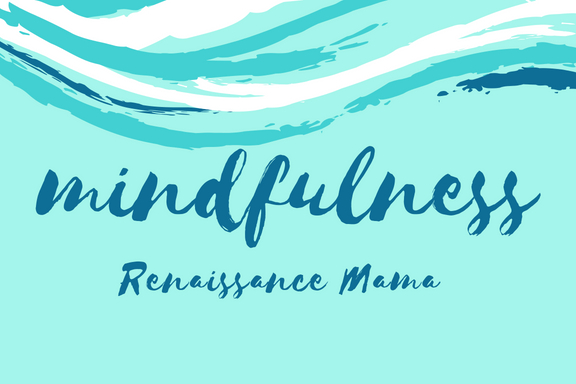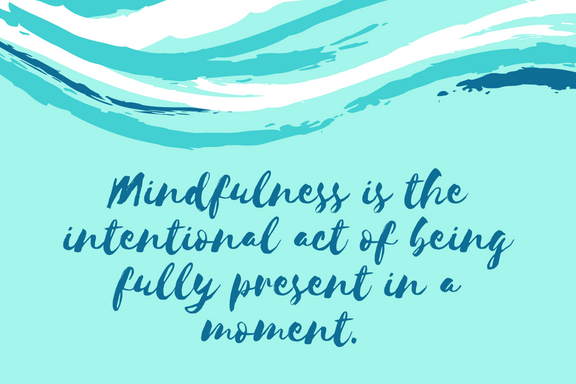
Mindfulness

Guest post by Joshalyn McHargue
I distinctly remember the first time I learned about mindfulness. It was during a counseling lecture, and my professor encouraged my classmates and me to make it a consistent part of our lives to avoid burnout. As a counselor in training, I was initially interested in how it could improve my counseling skills. Soon after I began practicing mindfulness, however, I found it to be a helpful tool in my life as a wife, friend, daughter, employee, and well, a human being!
Put simply, mindfulness is the intentional act of being fully present in a moment. It involves becoming aware of your thoughts and knowing where to put them as you give your undivided attention to what’s in front of you. When I returned from living overseas for six months, I was overwhelmed by the fast-paced nature of American society. Our calendars are full, our days are long, and our attention is working overtime to perform in more than one area at a time. The result is stress, which isn’t necessarily a bad thing. Our bodies secrete stress hormones to protect us from real or perceived harm. These hormones communicate messages of safety, such as “Hey, you’re overworking me. Let’s take a step back.” When we listen to our bodies, our stress hormones return to an equilibrium baseline. When we remain in overactivity, however, it becomes difficult for our stress hormone system to return to equilibrium.

Long-term, the continued secretion of stress hormones impedes our physical and emotional health, increasing the risk of high blood pressure and anxiety. Alpha waves, on the other hand, are the brain waves associated with relaxation. They are most active in the back of the brain, especially when we close our eyes (a common practice in mindfulness exercises). Practicing mindfulness, then, promotes feelings of peace and calm and increases our resilience to the demands of everyday life. Its invitation and instruction are simple: Slow down. Be present in this moment. Notice what you see. Notice what you feel. Notice who you’re with.
Take your first step toward mindful living by downloading a mindfulness app. I recommend Mindfulness Coach by the U.S. Department of Veteran Affairs. It’s free of charge and there are a variety of guided mindfulness exercises that teach you how to be the owner of your thoughts. They are approximately six to nine minutes long, and a powerful relaxation tool. I struggled with severe anxiety at the beginning of the year, and mindfulness exercises are one of the tools I utilized to gain awareness and control of the thoughts behind my emotions. The time and energy I put into those mindfulness exercises were well spent!
Feel free to visit jemchargue.com to share about the ways you practice mindfulness in your everyday life. For more information about stress and its impact on mental, physical, and emotional wellness, check out Bessel van der Kolk’s novel, The Body Keeps the Score: Brain, Mind, and Body in the Healing of Trauma. May your mindfulness journey be full of peace, freedom, and joy!

